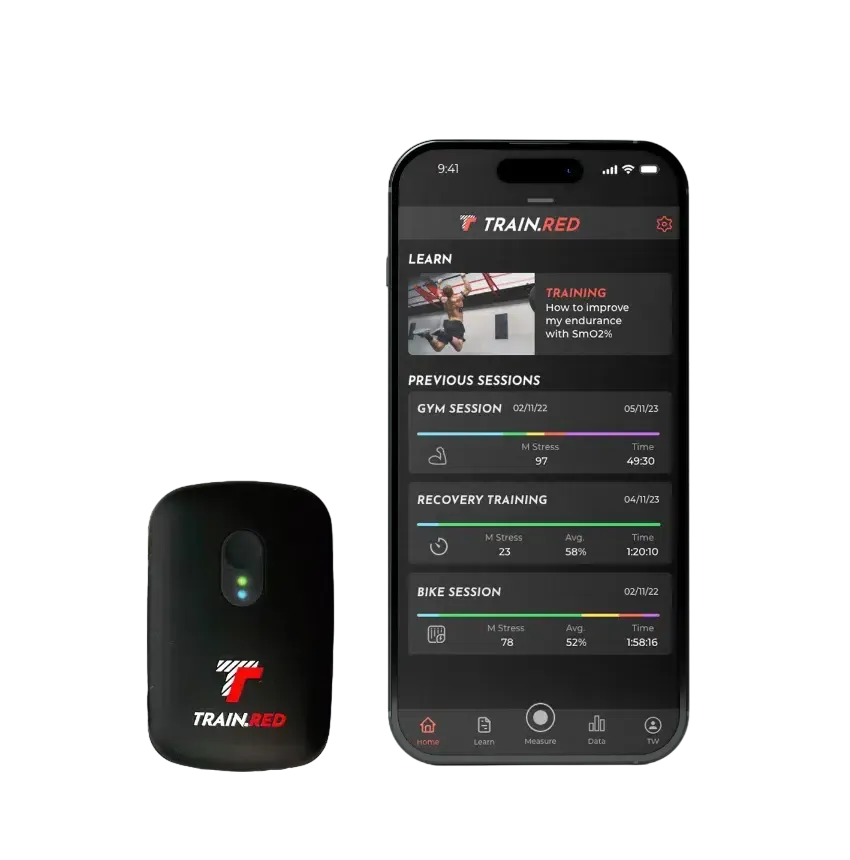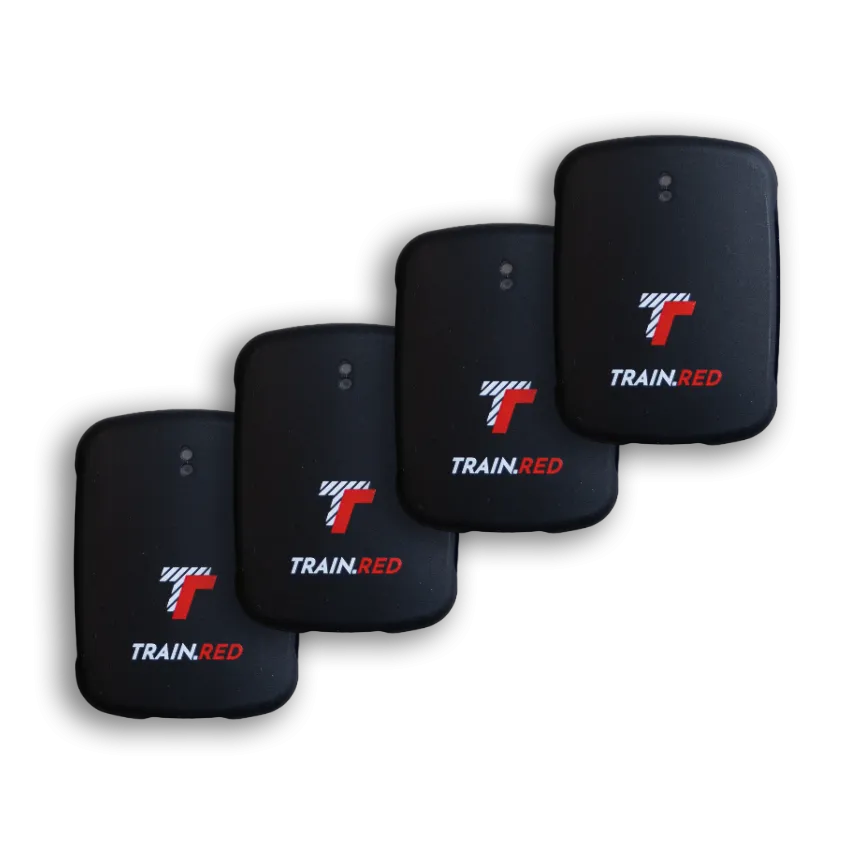Publications
The effect of spasticity severity on peripheral muscle oxygenation in hemiparetic stroke patients: a cross-sectional study
This study explores how stroke-related spasticity influences the way muscles receive and use oxygen. Researchers measured gastrocnemius muscle oxygenation with near-infrared spectroscopy in twenty people with hemiparetic stroke and compared them with ten healthy controls. Testing at rest, during a six-minute walk and stair climbing, and in recovery revealed that participants with more severe spasticity showed consistently lower resting oxygenation and blunted oxygenation changes during exercise and recovery. These findings suggest that greater spasticity may impair peripheral muscle oxygen delivery and utilization, offering new insight into post-stroke muscle metabolism.
ASSESSING STABILITY AND ACCURACY OF A NOVEL COMMERCIAL WEARABLE NEAR-INFRARED SPECTROSCOPY DEVICE
The article discusses the use of Near-infrared spectroscopy (NIRS) to measure muscle oxygenation levels in athletes to optimize their training performance. A new NIRS sensor called Train.Red FYER was developed for this purpose. The stability, accuracy, intra- and inter-variability of muscle oxygenation saturation (SmO2) were assessed using two different phantoms and in-vivo tests. The sensor was found to be stable and precise, with inter-variability being larger than intra-variability. The article concludes that the new NIRS sensor can be used to measure SmO2 accurately in athletes during endurance and strength activities.
APPLICATION OF A RECURRENT NEURAL NETWORK TO PREDICT THE OXYGENATED RECOVERY STATE FOLLOWING MAXIMUM ISOMETRIC HAND GRIPPING EXERCISE
The article discusses using Near-InfraRed Spectroscopy (NIRS) to study rest periods between strength exercises and develop a model for predicting the oxygenated recovery state. A Recurrent Neural Network (RNN) was trained to predict shifts between the four manually categorized phases of recovery. The RNN and Multi-Layer Perceptron (MLP) had similar accuracy, but the RNN was more consistent. This can help athletes design more efficient training programs.
Muscle Metabolism During Multiple Muscle Stimulation Using an Affordable Equipment
This study explores the potential of neuromuscular electrical stimulation (NMES) to increase muscle metabolism as an alternative to exercise for individuals unable to perform traditional physical activity. Using inexpensive stimulators and tin foil electrodes, NMES was applied to four leg muscles in healthy participants, with metabolism measured via near-infrared spectroscopy during brief ischemia. Results showed significant increases in muscle metabolism. These findings suggest NMES could effectively replace or augment exercise, offering a cost-effective solution for improving health in populations with limited mobility.
INVESTIGATION OF THE EFFECTS OF DIFFERENT EXERCISE MODELS ON HEART RATEVARIABILITY AND MUSCLE OXYGEN SATURATION
This study examines how different exercise types affect heart rate variability (HRV) and muscle oxygen saturation in athletes specializing in rowing and long-distance running. Eighteen male athletes participated, performing a graded exercise test on the first day and a 6-minute exercise at a target heart rate on the second day. Findings revealed that during the initial 2 minutes of the target heart rate test, runners exhibited higher RR intervals compared to rowers. Additionally, muscle oxygen saturation in both muscle groups was higher in runners during the first minute. During recovery, significant differences in RR values were observed within the first 90 seconds for both groups. These results suggest that autonomic control processes during acute recovery differ qualitatively between muscle groups of varying sizes engaged in different exercise types, even when heart rate levels are similar.
Comparing Muscle Oxygenation and Maximal Blood Lactate Concentration in Division I College Middle-Distance Athletes: A Speed Reserve Ratio Analysistle
The study examines the relationship between Speed Reserve Ratio (SRR), muscle oxygenation (SmO₂), and blood lactate levels in Division I middle-distance runners. Results show that athletes with a higher SRR tend to have lower VO₂ max but greater muscle oxygenation changes during exercise. A strong correlation was found between muscle oxygenation and maximal sprint speed (MSS), suggesting that faster sprinters experience greater SmO₂ variations. These findings indicate that monitoring SmO₂ can provide valuable insights into aerobic and anaerobic performance. The study highlights the potential for individualized training strategies based on SRR and muscle oxygenation data.
Investigation of Energy Conversion and Recovery Processes of Artistic Gymnastics Ring Apparat Competition Performance
The study examines energy conversion and recovery processes in artistic gymnastics ring apparatus performances. Given the intense upper-body engagement required, it explores how energy systems are utilized, muscle fatigue develops, and recovery occurs. Understanding these factors is crucial for performance optimization and athlete well-being.
Investigation of Local Muscle Oxygenation Using Multiple Near-Infrared Spectroscopy in Different Intensity Exercises
This study examines how varying exercise intensities affect muscle oxygenation. Utilizing multiple near-infrared spectroscopy (NIRS) devices, the research measures oxygen levels in specific muscles during exercises of differing intensities. The findings aim to enhance our understanding of muscle oxygenation dynamics, potentially informing more effective training and rehabilitation protocols.
Oxidative and O2 diffusive function in triceps brachii of recreational to world class swimmers
This study evaluated triceps brachii oxidative capacity and oxygen diffusion resistance in swimmers from recreational to world-class levels using near-infrared spectroscopy. Results showed that higher oxidative capacity was associated with better 100 m freestyle performance and greater training volume. Oxygen diffusion resistance did not differ between groups, suggesting that muscle oxidative capacity is a key factor in swimming performance.
Train.Red shines a light on your performance based on light technology, the FYER looks inside your muscles with Near InfraRed Spectroscopy (NIRS). The sensor translates the oxygen saturation and (de-)oxyhemoglobin changes in your muscle tissue into real-time key features with the help of artificial intelligence and a friendly user interface.
Our partner Artinis Medical Systems has over 1500 publications.








